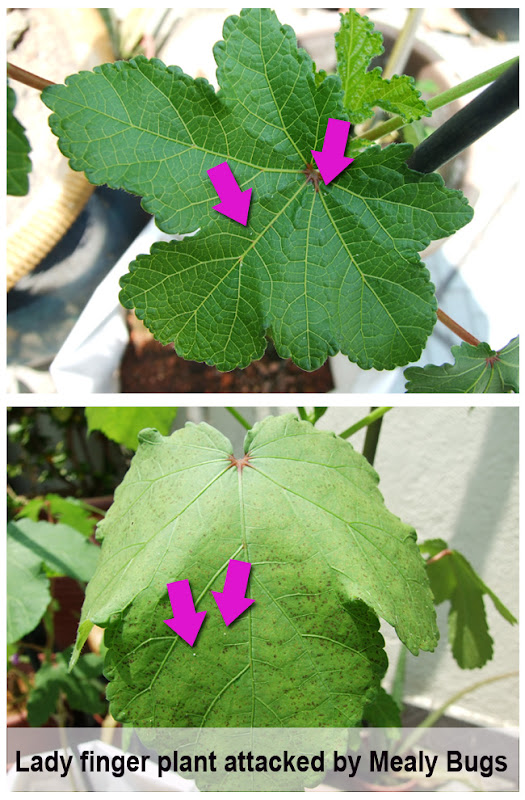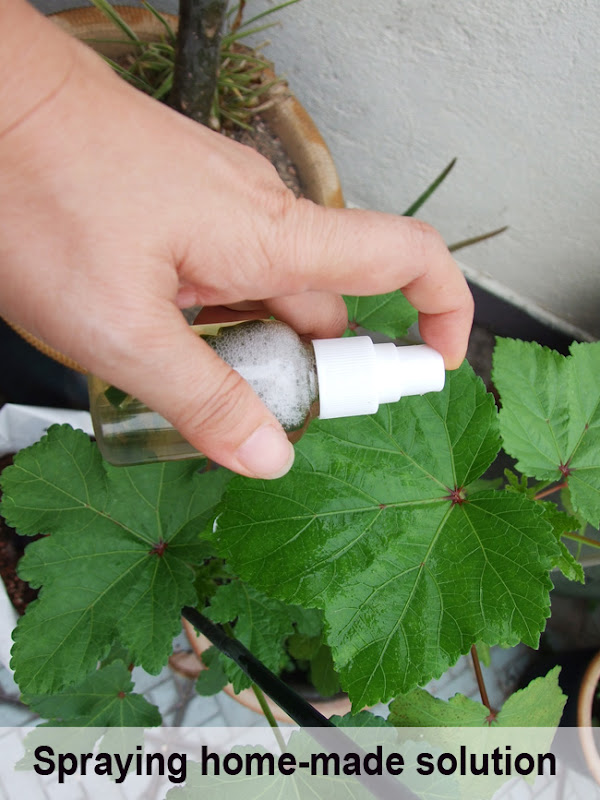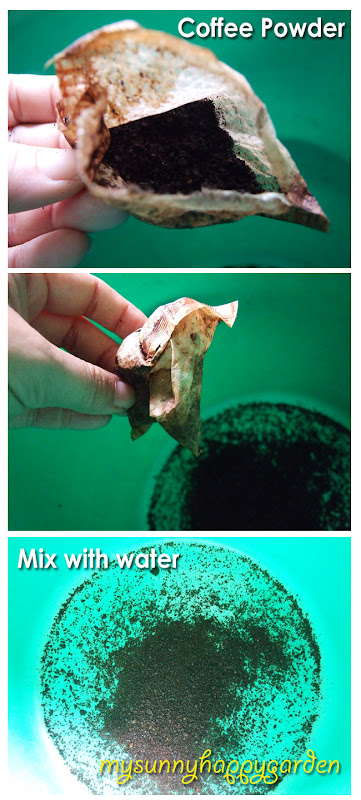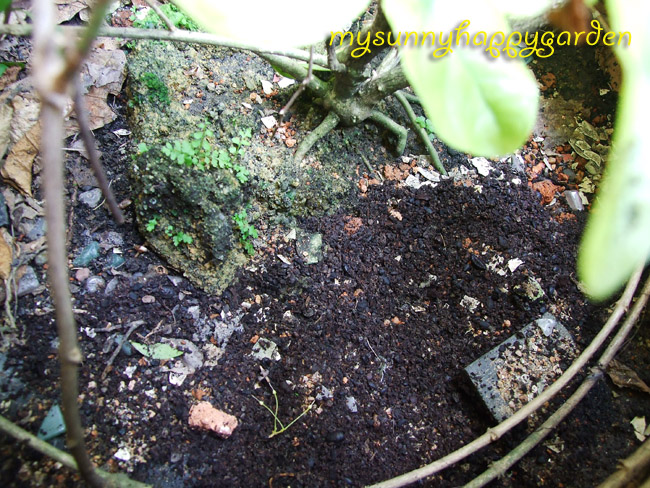Whenever I made
sambal belacan (a condiment made of fresh chilli with shrimp paste, Calamansi lime, sugar and salt) , I always wish I have a Calamansi lime plant in my garden that can supply me with ever ready lime that I need. I don't always have ready supply of Calamansi lime in the fridge.
Usually the Calamansi lime sold in the supermarket comes in a big pack of about 20 limes. Before I manage to finish those limes, they would be shriveled up & dried. To me, that is a waste and thus, I don't always buy & keep Calamansi lime for my cooking requirement. Instead, I would substitute the lime with rice vinegar for my sambal belacan. Of course, vinegar doesn't exude the fresh citrus fragrance that makes the ideal sambal. So, I decided it's time to get a Calamansi lime plant for my garden.
I bought my Calamansi plant from the Shah Alam Farmer's Market in Oct last year. It was quite a small plant then. But at RM10, I don't have much complain! During Chinese New Year season, a small pot would cost me nearly double the price I paid.
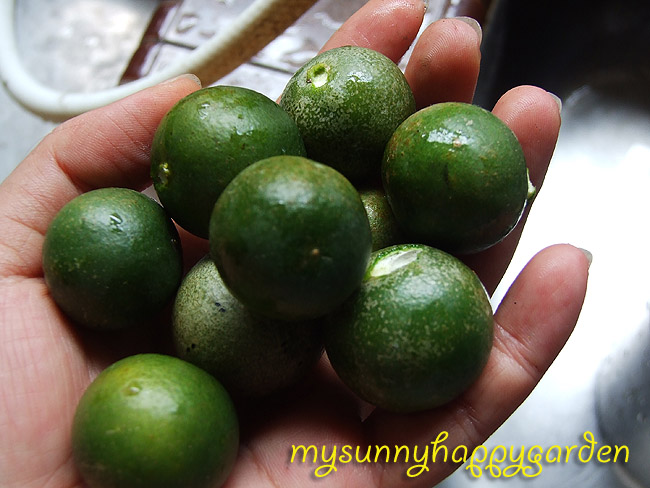
These are the Calamansi limes that I plucked from my garden today. It will come handy in my sambal belacan that will be served with my Chicken Pongteh for tonight's dinner. The remainder will be used for a jug of refreshing, cooling lime juice!
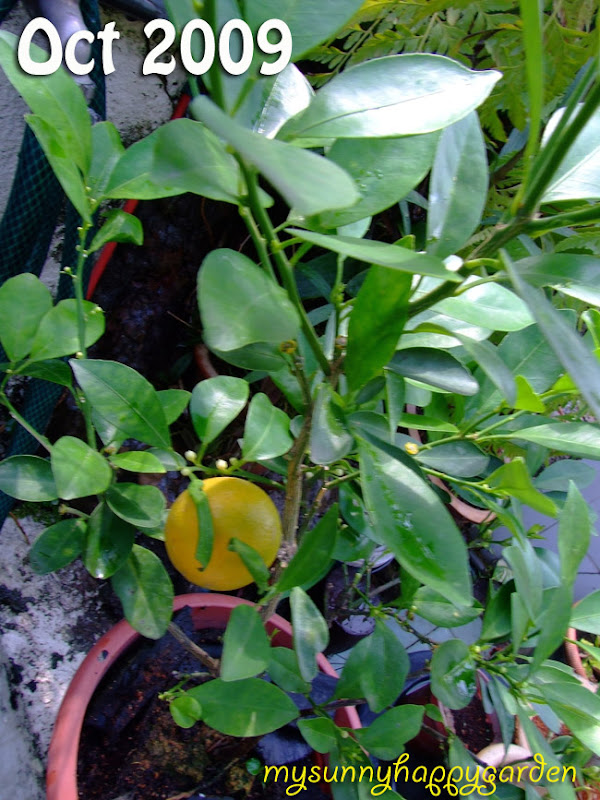
The Calamansi plant that I bought in October 2009 from Pakcik Nazri's stall in Shah Alam's Farmer's Market.
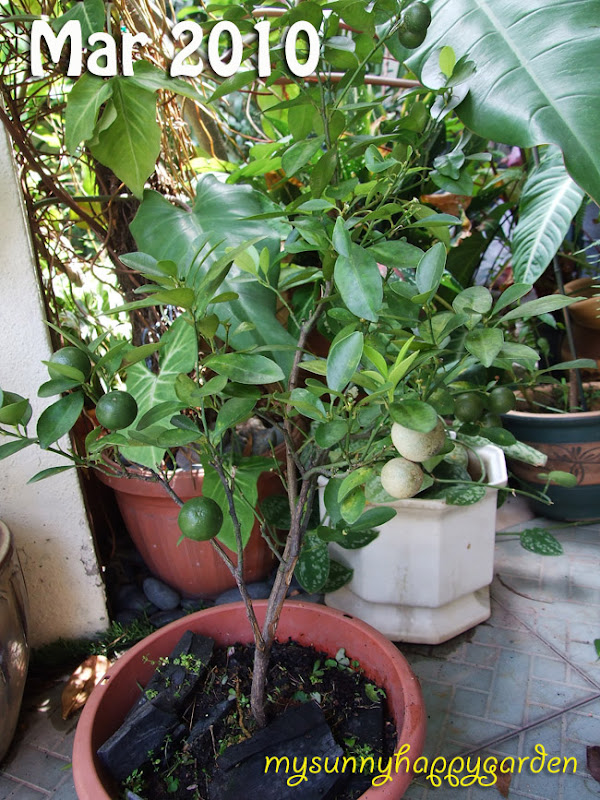
After regular fertilizing and tender loving care, my plant has grown taller and now bear many fruits.
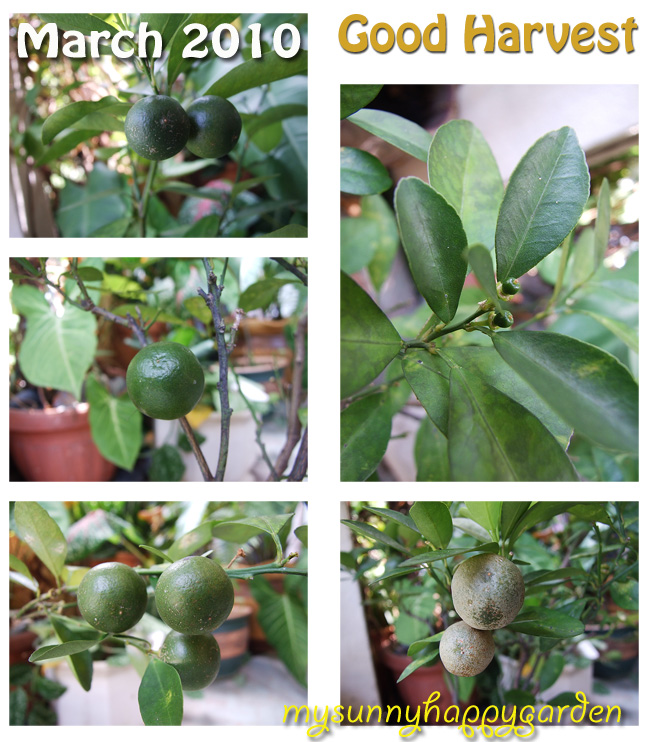
This photo shows the remaining fruits on my plant. I left this smaller fruit for future consumption. You can also see tiny fruits appearing on some branches.
Some facts about Calamansi lime plant and fruit from the Internet:
Calamansi lime is a source of calcium, phosphorus and potassium. Thirty-five pieces of calamansi are enough to satisfy a person's daily requirement of 100 milligrams of vitamin C.
It is easy to grow calamansi. Generally, a climate with low rainfall and plenty of sunshine is good for the crop. It promotes good flower differentiation, flower and fruit development, and fruit quality.
Calamansi can grow and produce well in a wide variety of soil types, except very light, sandy soils, and heavy clay soils. In general, most fruit trees prefer the soil ph to be between 5.5 and 6.5.
Like most citrus, there are several ways of propagating calamansi: budding, cuttings, marcotting, or grafting. The planting materials must be free from diseases.
If you are planting grafted calamansi, dig a hole at least 40 centimeters in diameter and 40 centimeters deep.
Set the seedlings into the hole and put back the soil mixed with compost. Water the plants daily.
To produce big, luscious fruits, the plants must be fertilized regularly. One month after planting, 50 to 100 grams (about one handful) or urea and 16-20-0 (mixed) are applied around each tree. Fertilization is done every four months. Starting on the second year, the fertilizer requirement is increased to 200 to 300 grams (Urea and 16-20-0 mixed) per tree.
The tree bears fruit after one to two years. By that time, the plants are supplied with complete fertilizer like 12-24-12 NPK at the rate of 1.5 kilograms per tree to increase fruit yield. By the time the tree is 8-10 years old, the fertilizer to be applied should be increased to two to three kilograms per tree. Fertilization is done three times per year.
Here's one pointer when applying fertilizer: Apply the fertilizer properly by mixing it with the soil. Cover the soil around each tree with dry leaves to conserve moisture. Uproot weeds when necessary.
Another one: Apply fertilizer to producing trees three times a year: first, during the rainy season before flowering; second, two months after flowering; and the last, after harvesting.
To keep the calamansi trees healthy, they must be protected from pests and diseases. To control citrus bark borers, the trees are sprayed with EPN 300 solution. Copper fungicide may also be used for the same problem.
To prevent the disease from spreading, the infected parts are cut off and burned.
The aphid is another harmful pest. To control aphids, the trees are sprayed with either Malathion solution (three tablespoons in 5 gallons water), Methyl Parathion (two tablespoons in 5 gallons water), or Diazinon (three tablespoons in 5 gallons water). If aphids have already attacked, the infected portions can be cut off and burned.
Citrus Production: A Manual for Asian Farmers shares this information: Maintaining good sanitation in orchard is very important in citrus health management. Twigs and fallen leaves should be collected from under and around the trees, and either buried or burned.
Covering the soil surface with a grass or straw mulch is an effective way of reducing levels of disease, as well as improving the soil. Covering the soil within 30 centimeters of the trunk with a layer of straw helps prevent infection of the roots with fungus diseases.
In harvesting, detach the fruits from the branches either manually or using a scissor. Take care not to damage the branches or the leaves. You will have better quality fruit if you leave a portion of the stem attached to the fruit and do not tear the skin of the fruit when you harvest.
If you look at the first photo carefully, I have tore some skin off one of the fruits when plucking it. If I had read this article before harvesting my Calamansi limes, I would be more careful!




